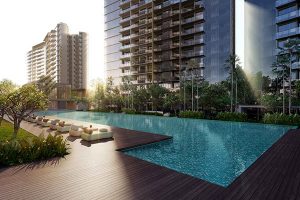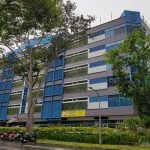Private residential demand saw an uptick as Singapore emerges from Covid-19 Circuit Breaker measures
As Singapore’s economy progressively started to reopen from early June, the residential property market enjoyed relatively brisk activity that translated into an appreciable uptick in transaction volumes.
In June itself, new sales more than doubled to 998 units, up from 487 units in May. Developer sales continued to increase, reaching 1,080 units in July, the highest since November 2019. Meanwhile, overall private home prices rose by 0.3% quarter-on-quarter in Q2 2020.
Rebound in June 2020 could be due to pent-up private residential demand
Table of Contents
EDMUND TIE’s senior director of research and consulting, Mr Lam Chern Woon said: “The rebound could be attributed to the pent-up demand in June 2020 when the economy started to open up and showflats were allowed to resume operations.”
Ms Ong Choon Fah, EDMUND TIE’s chief executive officer, said: “The relatively healthy property performance can be attributed to the low-interest rate environment and the high amount of liquidity in the system.”
“Underlying demand remains relatively strong, notwithstanding the sluggish economy, as buyers adopt a mid- to long-term view of the market to buy into well located and designed projects. Some developers have also offered ‘star buys’ and incorporated flexible design features and wellness into their designs, making them particularly attractive,” she added.
While travel restrictions have affected private residential demand from overseas buyers, Singaporean purchases nonetheless made up for the slack, and accounted for 80% of non-landed residential sales in Q2 2020, up from 77% in the previous quarter.
Mr Lam remarked: “The benign numbers we have seen so far are the result of the swift fiscal and monetary interventions by the government to bolster the economy, especially the sectors that have been more severely impacted by the pandemic.”
“In particular, the property tax rebates for landlords with pass-throughs to tenants, various financing and wage support schemes for companies will help cushion the spate of job losses in the economy, while the property-related relief measures relating to ABSD remissions and loan repayments will take selling pressure off the market,” he added.
Developers will likely view the recent property performance with some degree of cautious optimism. With an estimated 20 projects expected to be launched over the remainder of 2020, and barring further adverse externalities, transaction activity is anticipated to register a gradual improvement for the rest of the year.

Changing buyer preferences and private residential demand
As buyers remained cost conscious, the second quarter saw a significant increase in the proportion of apartment transactions under $1m, which increased 5 percentage points from Q1 2020 to 25% in Q2 2020. Within the Core Central Region, a higher portion of transactions in the $2m – $3m price quantum was led by sales at Kopar at Newton. Meanwhile, the proportion of transactions in the $1m – $1.5m range in the Rest of Central Region was driven by sales of Parc Esta and Stirling Residences.
However, even as buyers gravitated towards a lower price quantum, there was nonetheless a decline in the proportion of transactions for units under 500 sq ft: this category of apartments accounted for only 10% of total transactions, down from 14% in Q1 2020. On the other hand, the proportion of transactions for units between 500 and 700 sq ft rose by 3 percentage points to 36% in Q2 2020.
Ms Margaret Thean, EDMUND TIE’s executive director of residential sales, said: “The shift away from compact units under 500 sq ft to more spacious homes could be arising from the fact that more employees are working from home.”
“Going forward, as remote working becomes more prevalent in the new normal, apartments would need to have multi-functional layouts that facilitate seamless transition across living, working, studying and entertainment,” added Ms Thean.
Flash estimates from the Urban Redevelopment Authority (URA) on Thursday, 1 October, showed that private residential property prices grew at an increasing rate of 0.8% quarter-on-quarter (QOQ) in Q3 2020, after rising 0.3% in Q2. This brings private home prices to be up 0.1% year-to-date (YTD) in 2020.
Private residential property prices are now 2.7% above the most recent peak in Q3 2018 and 0.5% below its all-time peak in Q3 2013.
Based on caveats downloaded on 1 October 2020, developers sold 2,844 new private homes, excluding Executive Condominiums (ECs) in Q3 2020 – up by 66.0% QOQ (1,713 in Q2 2020) from a circuit breaker- disrupted Q2, but still a decline of 13.3% year-on-year (YOY) (3,281 in Q3 2019).
Colliers International said that the rebound in resales was more significant as the circuit breaker in April to early June affected the secondary market more than the primary market. The number of secondary sales jumped 185.3% QOQ and 9.3% YOY to 2,713 units in Q3 2020.
Core Central Region (CCR)
According to URA’s data, prices in the CCR declined 4.9% in Q3 from the previous quarter, after rising an unexpected 2.7% QOQ in Q2 2020. This brings CCR home prices to a 4.5% decline YTD.
CCR home price index is now 7.1% below its recent peak in Q3 2018 and 9.3% below its all-time peak in Q3 2013.
A closer look at the transactions during the quarter suggests that there were sporadic distressed sales in the secondary market. The decrease in Q3 non-landed CCR prices could also be due to discounts offered at selected ongoing launches.
Mr Paul Ho, chief mortgage officer at iCompareLoan, said: “the data quite clearly points to the fact that private residential demand picked-up after the Covid-19 Circuit Breaker started being gradually lifted. It shows that the property market in Singapore is quite resilient.”
“The non-landed property sector will pick up faster than the other sectors as the Singapore economy starts to recover,” added Mr Ho.






